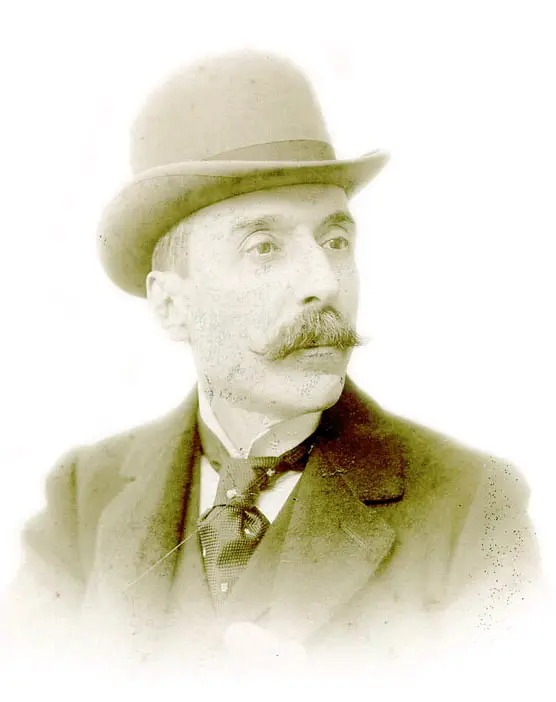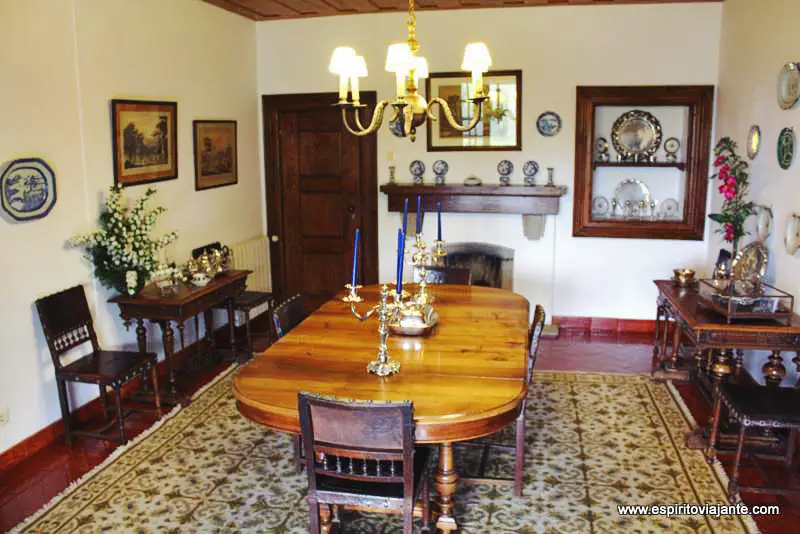Tormes House (in Portuguese Casa de Tormes), nestled in the picturesque region of Baião, Portugal, is more than just a historical landmark in Douro Valley; it’s a portal to the past and a testament to the enduring legacy of one of Portugal’s most celebrated literary figures, José Maria Eça de Queiroz. This article delves into the captivating history, architectural nuances, and cultural significance of Casa de Tormes, offering a comprehensive guide for those seeking to explore this remarkable site.
Location and Setting of Tormes House
Tormes House, in Santa Cruz do Douro, within the municipality of Baião, Portugal. The precise location is Quinta de Tormes, Caminho de Jacinto, Santa Cruz do Douro (Baião).
The address is Caminho de Jacinto, 3110 — Quinta de Tormes, 4640-424 Santa Cruz do Douro.
The estate, originally known as Quinta de Vila Nova, is nestled amidst the “powerfully dug valleys of the Douro”, a landscape that profoundly influenced Eça de Queiroz’s writing. Baião itself is located in the Norte Region of Portugal, specifically in the Tâmega e Sousa intermunicipal community and the Porto district.
Eça de Queiroz: A Literary Giant
Before delving into the history of Tormes House, it’s essential to understand the profound influence of José Maria Eça de Queiroz, the writer who brought this place to life in his works. Born in Póvoa de Varzim in 1845, Eça de Queiroz led a diverse life, working as a lawyer in Lisbon and later serving as a consul in Havana, England, and Paris. These experiences shaped his world-view and informed his writing, which often provided a critical and satirical commentary on 19th-century Portuguese society.
Eça de Queiroz is considered one of Portugal’s greatest novelists, renowned for his sharp wit, detailed descriptions, and ability to capture the essence of an era. His most famous works include “The Crime of Father Amaro” and “The Maias”, but it was “The City and the Mountains”, inspired by his time at Casa de Tormes, that cemented his connection to this idyllic location.

A Glimpse into History.
Tormes House, formerly Quinta de Vila Nova, holds a significant place in Portuguese literary history. It was here that Eça de Queiroz found inspiration for his acclaimed work, “The City and the Mountains”. The house, originally belonging to his wife’s family, provided a tranquil retreat where he could immerse himself in the beauty of the Douro Valley and craft his literary masterpieces.
The Eça de Queiroz Foundation, established at Tormes House, plays a crucial role in preserving and promoting the writer’s work and fulfilling its educational and cultural objectives. The foundation aims to preserve the memory of one of the greatest masters of the Portuguese language and make his heritage available for the cultural and formative elevation of the Portuguese people, especially the younger generations. One of the main projects that have been developed is the program of guided tours, not only for the curious, tourists, and groups of nature or cultural motivation.
Architecture and Design. A traditional Douro Valley Estate
While specific architectural details of Tormes House are limited in the provided research, it’s described as a “beautiful quinta”, suggesting a traditional architectural style characteristic of 19th-century Portuguese estates. Given the historical context and the region’s architectural trends, the house likely features elements such as whitewashed walls, terracotta roof tiles, and wrought-iron balconies, all blending harmoniously with the surrounding landscape.

Interestingly, the ground floor of the house reveals vestiges of even earlier periods. Tanks used for salting and preserving fish, dating back to Roman times, have been discovered, along with a section of the old city wall from the 14th century. These archaeological remnants add another layer of historical intrigue to Tormes House, showcasing the site’s rich and layered past.
Notable Events and People
Tormes House is inextricably linked to the life and work of Eça de Queiroz. The house-museum now serves as a repository of his legacy, showcasing his personal collection and offering insights into his creative process. Visitors can see the high table where he wrote standing up, engravings and paintings that adorned his Parisian home, and his personal library.
Furthermore, Tormes House offers genuine travel through time by recreating the atmosphere of Eça de Queiroz’s novel at the nearby train station. This immersive experience allows visitors to step into the world of “The City and the Mountains”, further enhancing their appreciation for the writer and his connection to the region.
Visiting Tormes House
Tormes House is open to the public, offering a unique opportunity to step back in time and experience the world of Eça de Queiroz. The museum is open from Tuesday to Sunday, including bank holidays, with specific visiting hours:
- Morning: 9:30 am to 12:30 pm;
- Afternoon: 2:30 pm to 6:30 pm.
Entrance to the house is granted on an hourly basis, starting at 9:30 am and with the last entry at 6:30 pm. The entrance fee is €5, with discounts available for students.
For inquiries, you can contact Tormes House at +351 254 882 120. You can also find more information on their website (http://www.feq.pt) or reach them via email at feq@feq.pt.
Things to Do Nearby Baião
Tormes House is located in an area rich in historical and cultural attractions, making it an ideal destination for those who are keen to learn more about the history of this region. Some notable nearby sites include:
- Convent of Ancede: A historic convent dating back to the 12th century.
- Casa do Lavrador – Museu Rural e Etnográfico: A museum showcasing rural life and ethnographic artefacts.
- Carrapatelo Dam: A significant dam on the Douro River.
- Castro de Porto Manso: An ancient settlement with defensive walls and moats.
- Monastery of Santo André de Ancede: A historical monastery offering insights into the region’s past.
- Ponte de Esmoriz: An ancient bridge with historical significance.
- Monastery of Santo André de Ancede: Explore the history of Ancede e Ribadouro with a visit to this monastery.
- Garden of Saint Bartholomew: Enjoy the outdoors at this lovely green space in Campelo e Ovil.
- Baião Municipal Museum: Spend time exploring the galleries in this museum located in Campelo e Ovil.
- Quinta de Covela: Enjoy a tasting or tour at this winery in Santa Cruz do Douro e São Tomé de Covelas.
- Paroquial Church: Learn about the history of Campelo e Ovil with a trip to this church.
- Serra do Marão: Commune with nature and explore the great outdoors at Serra do Marão during your travels in Teixeira e Teixeiró.
- Igreja de Sta. Cruz do Douro, Cais do Caldas de Aregos, and Bestanca River: These points of interest are located near Casa de Tormes.
Conclusion
Tormes House is a captivating destination that seamlessly blends history, literature, and natural beauty. Whether you’re an admirer of Eça de Queiroz’s literary genius, a history enthusiast eager to uncover layers of the past, or simply seeking a tranquil escape in the Douro Valley, Tormes House offers a unique and enriching experience. The house-museum provides an intimate glimpse into the life and work of one of Portugal’s most celebrated writers, while the surrounding region beckons with its historical sites, charming towns, and breathtaking landscapes. A visit to Casa de Tormes is a journey through time and literature, leaving a lasting impression on those who venture to this remarkable site.




